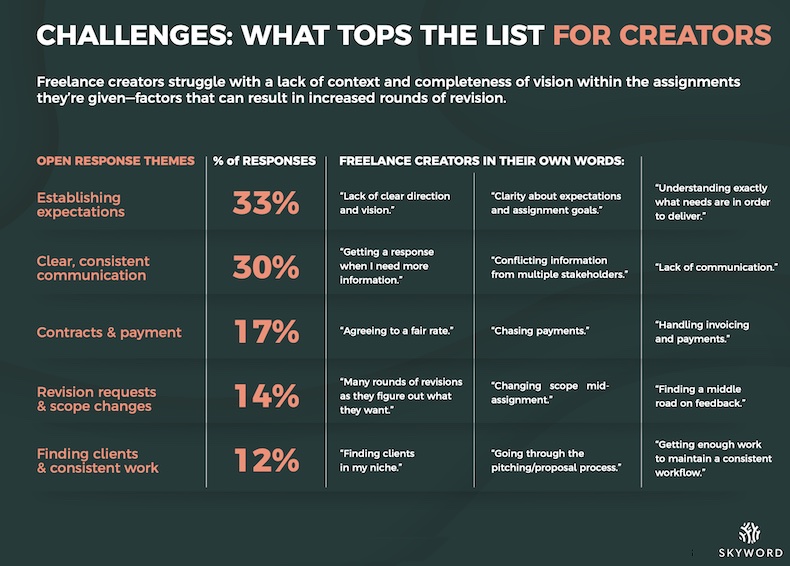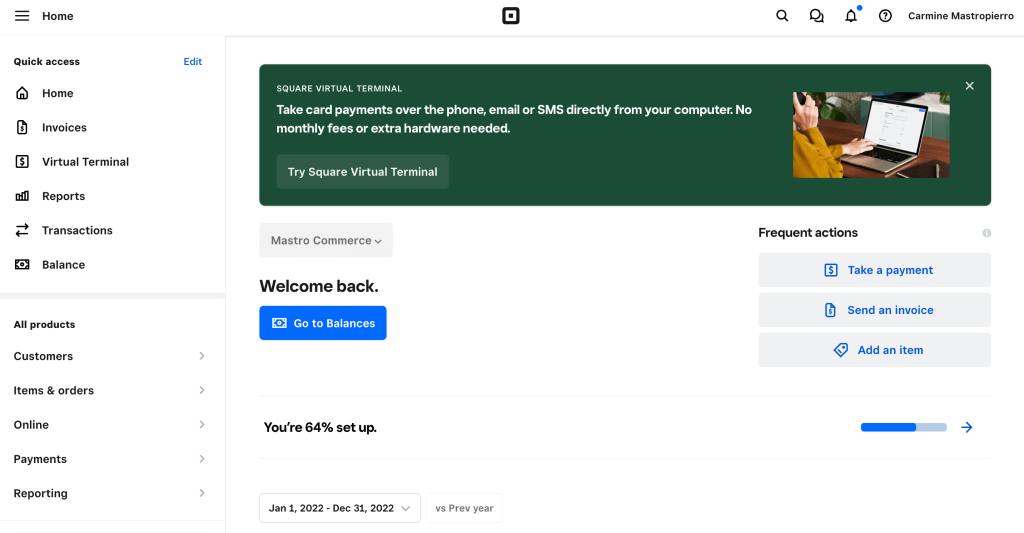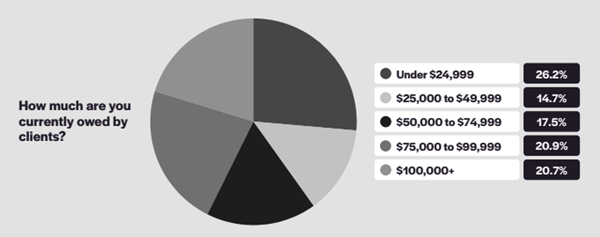Navigating the freelance world can feel like treading through a minefield of difficult clients, each one with their unique set of challenges and demands.
It’s a universal truth—every freelancer, at some point, encounters clients who are restrictive, rude, or just downright incompatible.

But here’s the kicker: dealing with difficult freelance clients is not just about surviving the ordeal; it’s about mastering the art of turning these challenging situations into opportunities for growth and learning.
Did you know that 33% of freelancers struggle with establishing expectations? It’s a staggering number, but it highlights the importance of learning how to handle difficult freelance clients effectively.

It’s not just about getting paid on time; it’s about setting clear boundaries, maintaining professionalism, and embracing empathy to see things from the client’s perspective.
So, are you ready to dive deep and explore actionable strategies to manage those tough clients and elevate your freelance game?
Let’s get started on this journey to unlock the secrets of client management and discover how to find joy in working with clients, even the difficult ones!
Setting Clear Boundaries With Freelance Clients
Alright, let’s dive straight into the nitty-gritty—setting clear boundaries. It’s the foundation, the bedrock of managing any client relationship, especially the tricky ones. It’s like drawing a map for your client, showing them the roads they can and can’t take.
I don’t know about you, but I have for sure faced scope creep in my projects. That’s when clear boundaries become your best friend, as they protect you from unwarranted demands and expectations.
Let’s break down setting boundaries with clients.
Craft a Clear Contract
Before you jump into any project, get that contract in place. It’s your rulebook, outlining what’s expected from both parties. It should detail your availability, the number of revisions included, and any additional fees for extra work or late payments.
And remember, it doesn’t have to be a fancy document; there are plenty of online templates that can help you whip up a professional contract in no time.
Read my guide on creating freelance contracts to learn more.
Define Your Availability
Let your clients know when you’re on the clock. Are weekends off-limits? Do you only respond to emails between 9 and 5? Spell it out! This way, you’re not bombarded with midnight calls or Sunday morning texts. It’s all about managing expectations and avoiding unnecessary stress.
Set Limits on Revisions
Be upfront about how many revisions are included in the initial cost. It’s a common pain point, and being clear from the get-go can save you a world of headaches down the line. If the client wants more changes, they know it’s going to cost them extra.
Be Firm on Payment Terms
Late payments? A freelancer’s nightmare! Clearly state your payment terms, including due dates and any late fees. It keeps things transparent and gives your clients a gentle nudge to pay on time.
Communicate, Communicate, Communicate
Keep those lines of communication open. Regular updates, check-ins, and feedback sessions keep everyone on the same page and nip any potential issues in the bud. It’s about building a relationship of trust and mutual respect.
Quick Tip
Use software tools like Square to automate reminders and manage your contracts and invoices efficiently. It not only saves you time but also ensures you don’t miss out on any details.

Be Empathetic of Your Client’s Needs
Let’s talk about something that doesn’t get enough attention in the freelance world—empathy. It’s helpful to step into your client’s shoes, see the world through their eyes, and understand their needs and concerns.
Studies show that 68% of clients leave because they perceive an attitude of indifference from their service providers. That’s huge!
But, how do you implement this into your client relationships? Here’s how.
Understand Their Perspective
When a disagreement pops up, it’s easy to get defensive. But hold your horses! Before you fire off that snarky email, take a moment to understand where your client is coming from.
Maybe they had a different vision for the project, or perhaps there was a miscommunication. Understanding their viewpoint can defuse tension and open the door to constructive dialogue.
Keep Your Cool
It’s tempting to snap back when a client rubs you the wrong way, but remember, keeping your cool is key. Respond with kindness and professionalism, even if they’re pushing your buttons.
Maintain the high road and show them respect, even if it’s not reciprocated. You’ll feel better and prevent any more issues.
Clarify and Validate
When conflicts arise, clarify any misunderstandings and validate your client’s feelings. A simple “I understand why you might feel that way…” can go a long way in smoothing ruffled feathers. It shows them that you’re listening and that you care about their concerns.
Find Common Ground
Once you’ve understood their perspective and validated their feelings, it’s time to find that sweet spot, the common ground where both parties can meet. It’s about compromise and finding a solution that benefits both you and your client.
Learn and Adapt
Every interaction, every disagreement is a learning opportunity. Reflect on these experiences, adapt your approach, and refine your communication skills. It’s about growing as a freelancer and building stronger, more positive client relationships.
Quick Tip
Practice active listening. It’s more than just hearing the words; it’s about understanding the emotions and intentions behind them. It builds trust and fosters a deeper connection with your clients.
Managing Freelance Payments Efficiently
Managing payments is the lifeblood of your freelance business, and let’s be honest, it can be a real pain point when clients don’t pay up on time.
In fact, a staggering 26.2% of freelancers are owed up to $24,999 at any given time!

Here’s how you ensure that the cash keeps flowing and your bank account stays happy.
Use Software to Your Advantage
Like I mentioned earlier, in this digital age, there’s no excuse for not leveraging technology to manage your payments. Use software like QuickBooks or Square to send out invoices, set up payment reminders, and keep track of your finances.
Set Clear Payment Terms
From the get-go, be crystal clear about your payment terms. Specify the due date on your invoices and don’t shy away from setting up late fees. It sends a clear message to your clients—pay on time or pay extra.
Chase Up on Late Payments
If a payment is overdue, don’t just sit there twiddling your thumbs. Be proactive! Send out polite but firm reminders, and don’t hesitate to follow up. It’s your hard-earned money, and you have every right to ask for it.
Offer Multiple Payment Options
Make it easy for your clients to pay you. Offer multiple payment options like bank transfers, credit card payments, or online payment platforms. The easier you make it, the quicker you get paid.
Keep Detailed Records
Maintain meticulous records of all your transactions. It’s not just good business practice; it’s your safety net in case of disputes. Having a detailed paper trail can save you a lot of headaches in the long run.
Quick Tip
Automate as much of the payment process as possible. It not only saves you time but also eliminates the risk of human error. Plus, it frees you up to focus on what you do best—delivering top-notch work to your clients.
Accepting Constructive Feedback From Clients
Your clients will eventually have feedback on your work. It happens all of the time. You need to be free of ego and remain open-minded, or it’s easy to take it personally.
Here’s how you can accept constructive (or unproductive) criticism from clients.
Distinguish Between Constructive and Destructive
Not all feedback is created equal. Learn to differentiate between constructive criticism, which is aimed at improving your work, and destructive feedback, which is just plain harmful.
Constructive feedback is your ally; it’s the golden nugget that helps you refine your skills and elevate your game.
Respond, Don’t React
When you receive feedback that feels like a punch in the gut, take a deep breath. Don’t fire back immediately. Process it, reflect on it, and then respond with professionalism and grace. Maintain control and don’t let emotions hijack the conversation.
Seek Clarification
If something is unclear, ask for clarification. Dive deeper into the feedback and understand the specifics. It’s about getting to the root of the issue and addressing it effectively. The more you understand, the better you can adjust and improve.
Turn Feedback into Action
Once you’ve understood the feedback, create an action plan. Implement the suggested changes, refine your approach, and enhance your work quality. Try turning words into actions and using feedback as a stepping stone to excellence.
Maintain Open Communication
Keep the lines of communication open and encourage ongoing feedback. It fosters a collaborative environment and helps in building a stronger, more positive relationship with your clients. It’s a two-way street, and open dialogue is key.
Quick Tip
Develop a growth mindset. View feedback as an opportunity to learn and grow. It’s not a reflection of your worth but a tool to help you become the best version of your professional self.
Maintaining Your Professionalism
52% of customers will suggest your business to others if they feel it’s authentic.

It’s crucial that you let your values shine through your actions and how you maintain client relationships. This can have a great return on investment in the future.
How do you remain professional when dealing with difficult clients and situations? Here are some tips.
Stay Calm and Collected
When the going gets tough, the tough stay calm. It’s tempting to let emotions run wild, especially when dealing with challenging clients, but keeping your cool is paramount.
Respond to any negativity with positivity and maintain a level-headed approach. It’s about being the bigger person and keeping those professional standards high.
Communicate Clearly and Concisely
Clear communication is the cornerstone of professionalism. Be transparent, concise, and articulate in your interactions. Avoid jargon, be responsive, and ensure your messages are easy to understand. Think about creating a smooth, hassle-free experience for your clients.
Meet Your Deadlines
Nothing screams professionalism like delivering quality work on time, every time. Manage your time effectively, prioritize your tasks, and always meet your deadlines. It builds trust and showcases your commitment and reliability.
Keep Your Promises
If you say you’re going to do something, do it. It’s as simple as that. Keeping your word is a non-negotiable aspect of professionalism. It builds credibility and shows your clients that you’re trustworthy and dependable.
Respect Boundaries
Understand and respect the boundaries between professional and personal interactions. Keep conversations focused on work-related topics and avoid oversharing personal information. Focus on maintaining a healthy balance and ensuring a comfortable working relationship.
Quick Tip
Always be open to learning and improving. Embrace new knowledge, refine your skills, and stay updated on industry trends. It not only enhances your professionalism but also positions you as an expert in your field.
Know When to Walk Away
Alright, let’s talk about something that’s often tough to do but absolutely crucial—knowing when to walk away. It’s like breaking up; nobody said it’s easy, but sometimes it’s the only way to maintain your sanity and well-being.
In the freelance world, time is money, and sometimes it’s not worth keeping a client that gives you headaches. Trust me, I’ve been there, and here are my further thoughts on this.
Recognize the Red Flags
I’ve had some bad clients. And, let me tell you, when the relationship is more draining than rewarding, when every interaction leaves you frustrated, it’s a red flag.
Recognize the signs of a toxic freelance client relationship—constant disrespect, unrealistic demands, late payments—and act on them. It’s about protecting your peace and your business.
Something I’ve learned over time is that your sanity is not worth a paycheck. Maybe at the beginning of your career, you may have to put up with some nonsense to get the ball rolling. But, once you do, don’t put up with BS.
Evaluate the Impact on Your Business
Before making any rash decisions, assess the impact of the client on your business. Are they worth the stress and the hassle? If a client is causing more harm than good, it might be time to let them go. Weigh the pros and cons and make an informed decision.
Communicate Your Concerns
Before you decide to walk away, communicate your concerns with the client. Give them a chance to rectify the issues. Clear, honest communication can sometimes resolve misunderstandings and salvage the relationship. It’s about giving it one last shot before calling it quits.
End Things Professionally
If all else fails and it’s time to part ways, do it with professionalism and grace. Be clear, be polite, and avoid burning bridges. You never know when you might cross paths again, and maintaining a positive reputation is key in the freelance world.
Reflect and Learn
After the breakup, reflect on the experience. What can you learn from it? How can you avoid similar situations in the future? Use it as a learning opportunity to refine your client selection process and improve your relationship management skills.
Quick Tip
Always have a clear contract in place. It not only sets clear expectations from the start but also provides a reference point in case of disputes. It’s your safety net, so make sure it’s strong.
Wrapping Up How to Deal With Difficult Freelance Clients
Most freelancers have headaches with clients at some point in their careers. It’s a tough part of the job, but it happens, and you must go through it to become better.
And it’s not just about surviving in the freelance world; it’s about thriving, growing, and building lasting, positive relationships with your clients.
So, what’s the takeaway? Try being proactive, being professional, and being human. It’s about turning every challenge into an opportunity to learn and grow. It’s about respecting yourself, respecting your clients, and delivering top-notch, value-packed service.
Implement these strategies, infuse your interactions with a dose of empathy and professionalism, and watch your freelance career reach new heights.
If you want to learn about this topic and more, explore my online courses.













